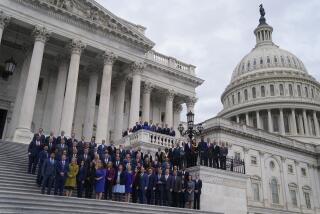Washington, D.C.: Four best places to view ‘Out of Many, One’ portrait

Washington, D.C.’s newest face? It’s a 6-acre portrait called “Out of Many, One” and it’s made of sand, soil and gravel. Here’s the catch: You can’t see it from the ground.
Those walking through the artwork, which opened Saturday beside the reflecting pool in front of the Lincoln Memorial on the National Mall, won’t see the face of a man peeking out from behind a row of bushes. They’ll see furrows of gravel and dirt, along with interactive displays that explain how it all came together.
It takes a high vantage point -- really high -- to discern the artwork created by Cuban American artist Jorge Rodriguez-Gerada and commissioned by the National Portrait Gallery.
Think you can hire a flyover? “No helicopter tours,” a museum spokeswoman said in an email. “This is the most restricted airspace in the country.”
The portrait remains on the National Mall through Oct. 31.
Here are four places that guarantee you’ll get the picture.
--Outer space: Yes, this is a feature you can see if you are orbiting the Earth, the museum says, though it might be tough to grab a rocket to the International Space Station on short notice.
--Washington Monument: Thanks goodness the quake-fortified landmark reopened in May or this wouldn’t be an option. In fact, it’s the best option for a full-on view of the portrait (good luck getting a selfie). Act fast if you want to book online (I checked Friday and found availability for Oct. 23 and later), or queue up for same-day free tickets.
--Reserve a window seat on a flight into Reagan National Airport. You’ll simply have to and rebook if it’s foggy.
--EarthCam to the rescue! Sit back and view the portrait on your laptop or mobile device, courtesy of WAMO CAM, short for Washington Monument Cam. It’s mounted in the landmark’s “pyramidium,” that tippy-top spot more than 500 feet in the air.
Back to the portrait. The title comes from the Latin e plurbus unum that’s on the back of any penny, but also from the process Rodriguez-Gerada used in creating the work. He photographed many different men of different races in the D.C. area to create a composite face.
Precision technology is involved with exactly how he did this. A post on the CityLab website explains the “satellite imagery and mass-agriculture technology” that came into play.
To watch it being built, see the timeline photos posted on the National Portrait Gallery’s Facebook page.
More to Read
Sign up for The Wild
We’ll help you find the best places to hike, bike and run, as well as the perfect silent spots for meditation and yoga.
You may occasionally receive promotional content from the Los Angeles Times.







